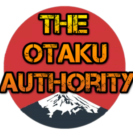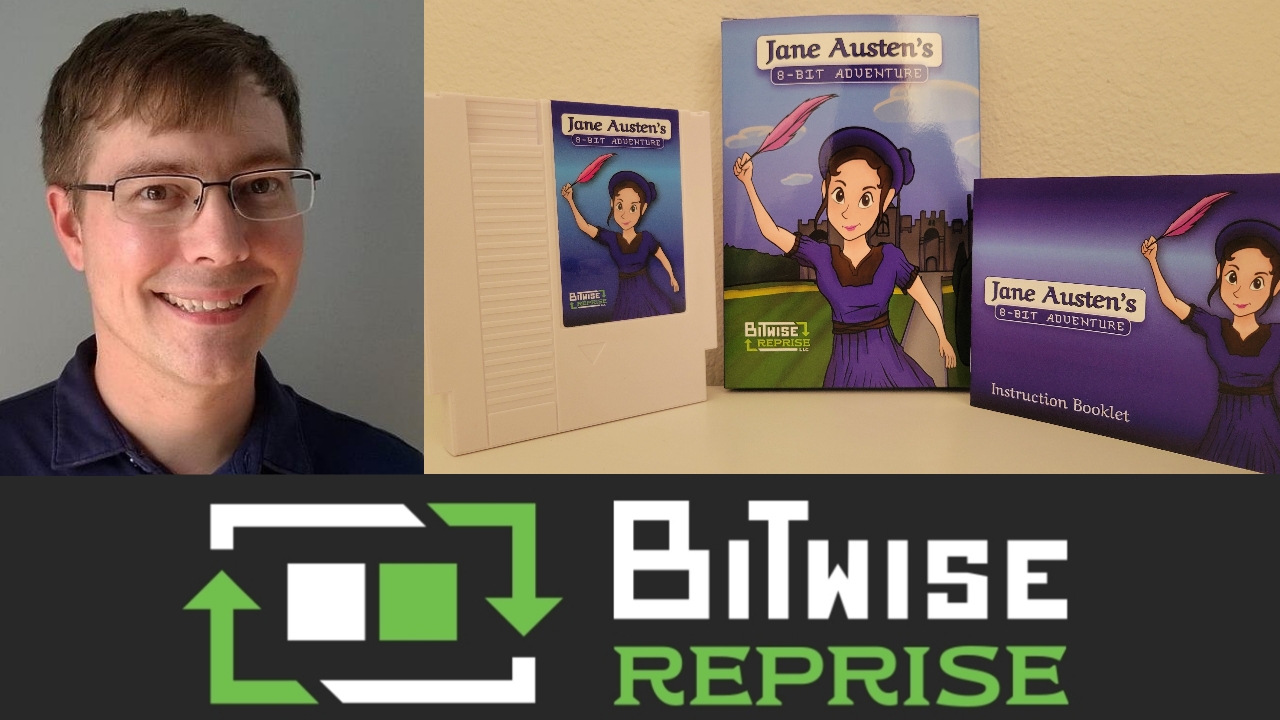We have covered a few retro indie games on this site lately and we thought it would be a great idea to interview the developer for Jane Austen’s 8-Bit Adventure. Below you will find a brief question and answer segment with Matthew Justice of BitWise Reprise, the developer behind one of the best indie games on the NES platform.
Q: Have you always wanted to create an NES game; what made you decide on an author as opposed to a fictional character?
A: The NES was my first game console, and it’s partially responsible for my interest in computing and my eventual career as a software engineer. So yes, for a long time I’ve wanted to revisit the NES as a developer, to challenge myself and see if I could make a game in a way that was similar to how it was done in the 1980s. I was drawn to the idea of an author confronted by her own creations – the characters and places from her novels. Not just her own creations, but a strange version of it, an 8-bit world based on her novels. It was such an odd juxtaposition – Jane Austen in an 8-bit world – and that made me want to do it! Also, using the premise of “Jane Austen has been pulled into a 1980s era video game” allowed us to freely blend elements of retro video games with elements of Jane Austen’s life and novels. Since Jane was getting pulled into a retro video game world, any staples from either 1980s video games or Regency England were reasonable to include. That gave us some creative freedom.
Q: What made you decide on this specific author as a basis for this game? Did you give any thought to basing the game on any other authors like Emily Bronte, or Terry Brooks for example?
A: My wife loves Jane Austen’s novels, and consequently I’ve grown to appreciate Austen as well. A Jane Austen theme allowed me to work with my wife and tap into her Jane Austen expertise. I did consider including other authors as well, but Austen was always going to be the primary focus.
Q: With this game being a platformer, were other genres of game considered, such as a shooter, or a point and click adventure?
A: Early on in brainstorming we had a bunch of ideas… tower defense, puzzle, matching, a frogger-type game, and others! Many of these had themes involving social interactions and courtship, which are common elements of Austen’s novels. This was before we landed on the idea of Jane herself getting pulled into the game.
Q: What were some of your biggest influences as game designers? And more specifically on this game? Did any particular game have a major impact on your design philosophy?
A: Once we had settled on a platformer, I wanted a Castlevania-style game, but with character movement more akin to Mario games. There’s also a set of special moves that take influence from other games – a Street Fighter inspired fireball, for example. I happened to be playing Castlevania: Rondo of Blood around the time that I was working on the design of this game. That game inspired me to make something that is just really fun to control. Also, Rondo of Blood strikes a balance between fully linear levels (like classic Castlevania) and full exploration (like Castlevania: Symphony of the Night). I wanted to do something similar, in terms of adding exploration elements.
Q: Do you have games in the works that feature any fictional characters or original character designs?
A: I’m considering some ideas for other games, but nothing is settled yet.
Q: Is there anything that you wish you could have done differently with this game, or is there anything that you regret with the finished product?
A: I have a list of technical design decisions that I would reconsider, things I would do differently if I wrote another NES game. But those are just implementation details and don’t really impact the player’s experience. As far as regrets go, since we released digitally first, we got some great feedback that allowed us to make some updates before committing to manufacturing cartridges. So, while there were a few things I wasn’t satisfied with when the game first released, thankfully we had the opportunity to update the game post-release, and the physical version contains all those changes.
Q: How long did it take to develop the game and did you find it hard to confine the game to the limits of the NES hardware?
A: I spent about 3 years from the very early idea of making a NES game to release. However, that time was allocated to several different phases of development. First, there was a prework period where I was just getting up to speed on how to code for the NES, and I was brainstorming ideas with my wife. Once I had decided to release on both the NES and modern platforms (Windows, Mac, Linux, Android), I started building a development framework for creating NES-like games on modern systems. This provided a foundation for building the game in a way that kept the two codebases (NES and modern) aligned in terms of overall design, and it allowed for sharing of data between the two. From there I moved on to creating the game’s engine – the specifics of how levels load, how enemies are spawned, how physics works… all of those details. And finally, my focus moved on to finishing the content – how are the levels arranged, finalizing graphics, adding music, and so forth. In the last year or so I collaborated with some other developers, testers, and a promotional artist to wrap things up. The limitation of the NES that was most problematic for me was the data size of the cartridge. I initially tried to fit everything on a 40KB cartridge. This is the most basic type of cartridge, like Super Mario Bros. uses. Unfortunately, this wasn’t enough storage for all the stages I wanted to include, so I ended up using a larger cartridge size. The other big challenge was audio. For the most part, the NES doesn’t play pre-recorded audio. Instead, a developer writes code to control a few waveform generators. In effect, the NES is a musical instrument, and the developer plays it with code. I have a musical background, and I composed or arranged songs for the game, but then writing the code to make the NES play that music was difficult! One constraint I actually appreciated was the graphical limits of the NES. I’m new to pixel art and having some limitations on graphics was rather helpful in terms of keeping things simple.
Q: Is this the last we have seen of Jane Austen? Could we see another adventure, maybe a 16-bit or 32-bit adventure in Jane’s future?
A: The thought has crossed my mind – maybe “Jane Austen’s 16-bit Adventure” for the Genesis / Mega Drive or “Super Jane Austen’s Adventure” for the SNES!
Q: Are there plans to bring this game to other platforms like the original Game Boy, Sega Genesis, or other platforms?
A: We are looking into bringing the game to a couple of additional modern platforms, but I don’t have any plans for a direct port to another retro console. Although if we did a sequel, I’d certainly consider retro consoles.
Q: Do you have anything you would like to say to readers of The Otaku Authority?
A: I’m thankful for the opportunity to tell you a little bit about developing this game! The retro gaming community has been encouraging and supportive throughout this process. It’s great to see continued interest in games for classic game consoles!

